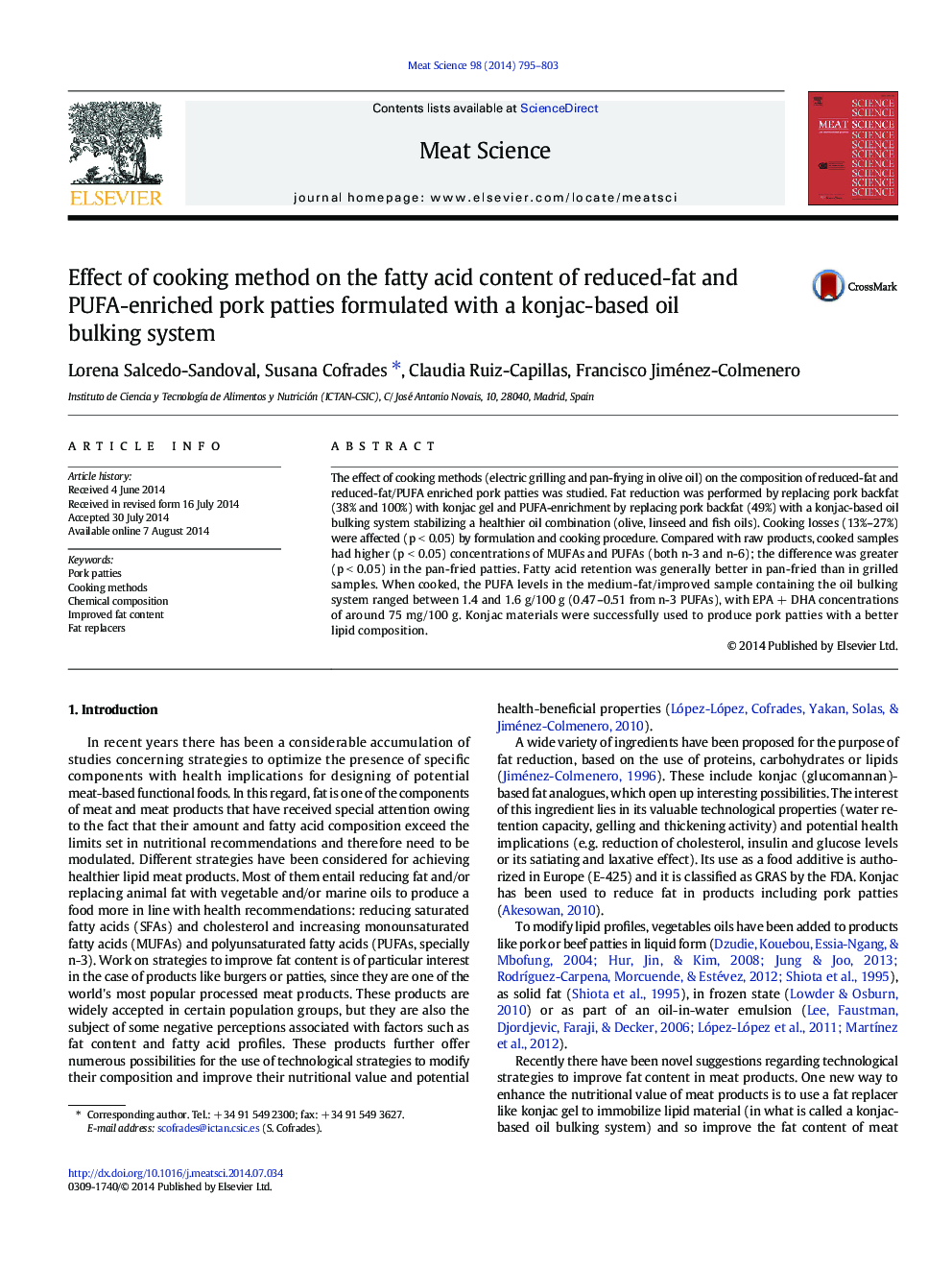| Article ID | Journal | Published Year | Pages | File Type |
|---|---|---|---|---|
| 2450015 | Meat Science | 2014 | 9 Pages |
•Incorporation of konjac-based oil bulking system improved lipid profile of patties.•Fatty acid concentrations of patties were affected by formulation and cooking method.•Retention of fatty acids was generally better in pan-fried than in grilled samples.•Konjac-based oil bulking system retained the fat and reduced fat loss during cooking.
The effect of cooking methods (electric grilling and pan-frying in olive oil) on the composition of reduced-fat and reduced-fat/PUFA enriched pork patties was studied. Fat reduction was performed by replacing pork backfat (38% and 100%) with konjac gel and PUFA-enrichment by replacing pork backfat (49%) with a konjac-based oil bulking system stabilizing a healthier oil combination (olive, linseed and fish oils). Cooking losses (13%–27%) were affected (p < 0.05) by formulation and cooking procedure. Compared with raw products, cooked samples had higher (p < 0.05) concentrations of MUFAs and PUFAs (both n-3 and n-6); the difference was greater (p < 0.05) in the pan-fried patties. Fatty acid retention was generally better in pan-fried than in grilled samples. When cooked, the PUFA levels in the medium-fat/improved sample containing the oil bulking system ranged between 1.4 and 1.6 g/100 g (0.47–0.51 from n-3 PUFAs), with EPA + DHA concentrations of around 75 mg/100 g. Konjac materials were successfully used to produce pork patties with a better lipid composition.
